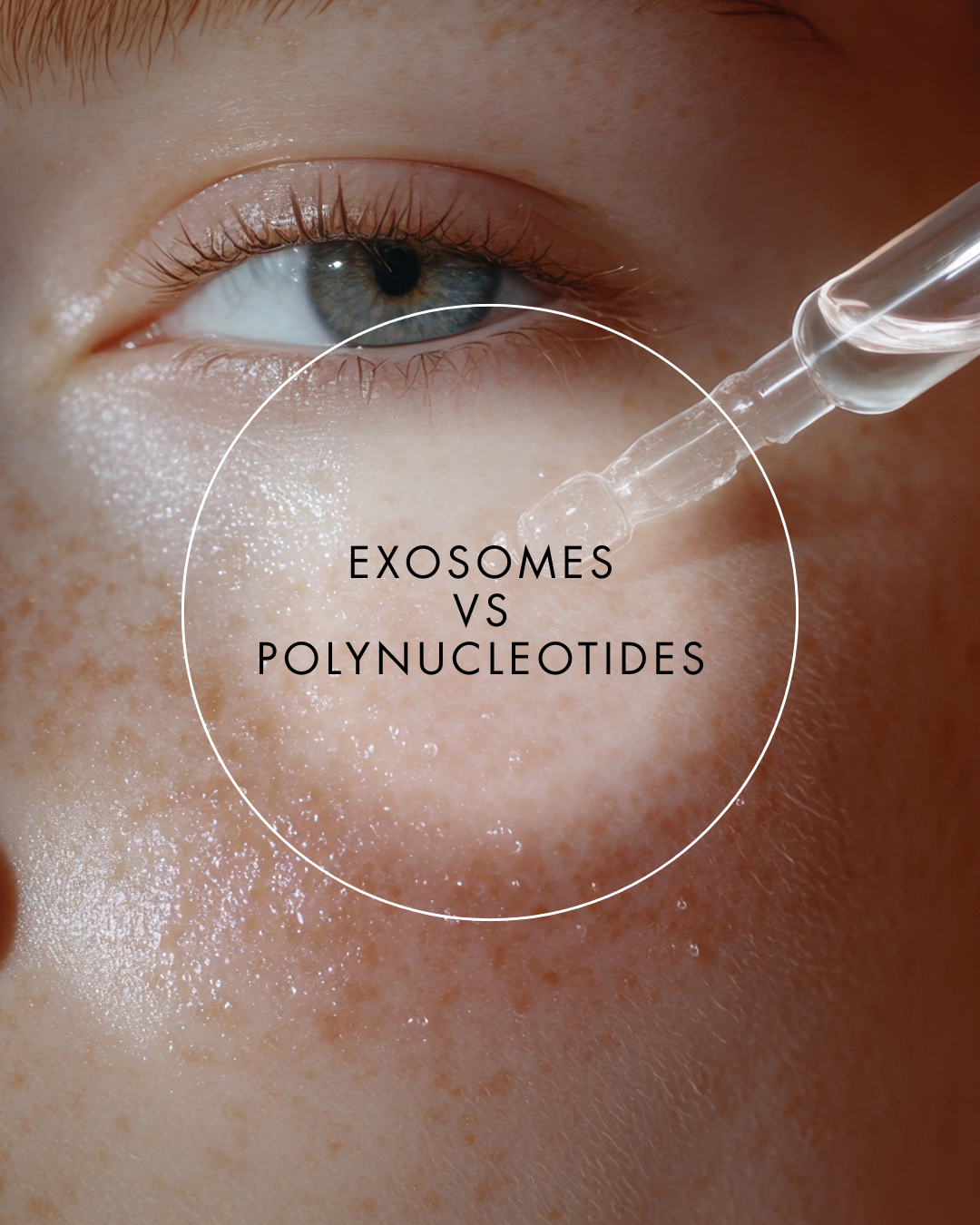
Polynucleotides vs. Exosomes: What’s the Difference & Why They’re Transforming Aesthetic Treatments
Share
In recent years, regenerative aesthetics has become one of the fastest-growing sectors in the industry, with innovative treatments that go beyond simply masking ageing to actively repair and rejuvenate the skin from within. Two standout technologies leading the way are polynucleotides and exosomes – both of which offer impressive, natural-looking results by working at a cellular level.
But what’s the difference between them, and how do you know which to choose for your clients?
What Are Polynucleotides?
Polynucleotides are purified DNA fragments derived from salmon or trout, which have remarkable regenerative properties. When injected into the skin, they work by stimulating fibroblast activity, boosting collagen production, hydrating the skin, and promoting tissue repair.
Key Benefits of Polynucleotides:
-Stimulate collagen and elastin synthesis
-Improve skin tone, texture, and elasticity
-Reduce fine lines, pigmentation, and scarring
-Hydrate and plump the skin from within
-Safe and well-tolerated across all skin types
Popular for treating areas such as the under-eyes, full face, neck, and even the scalp for hair restoration, polynucleotides are ideal for clients seeking subtle yet powerful skin rejuvenation.
What Are Exosomes?
Exosomes are extracellular vesicles (tiny communication messengers) naturally released by cells. In aesthetic treatments, lab-cultured exosomes derived from stem cells are used to deliver powerful growth factors, peptides, and cytokines directly to the skin. These bio-signals trigger deep regeneration, reduce inflammation, and enhance overall skin health.
Key Benefits of Exosomes:
-Deliver over 200+ growth factors and regenerative signals
-Speed up skin healing post-treatment (e.g. microneedling, laser)
-Even out skin tone and improve radiance
-Help treat acne, inflammation, and early signs of ageing
-Often used as a topical or injectable after advanced procedures
Exosomes are a cutting-edge choice for clinics offering high-performance treatments, especially those combining skin repair and anti-inflammatory action.
Which Is Best?
Both treatments can be highly effective – but the choice depends on your client’s goals.
-Choose polynucleotides for deep hydration, collagen stimulation, and long-term regeneration.
-Choose exosomes for advanced skin healing, inflammation reduction, and post-procedure recovery.
Some clinics even combine both in advanced protocols, harnessing the cellular communication of exosomes alongside the structural rebuilding of polynucleotides for superior outcomes.
Explore Our Regenerative Range
At HUK Aesthetics, we stock a curated selection of both polynucleotide-based products and exosome therapies trusted by leading UK practitioners. Whether you’re looking to introduce these treatments into your clinic or want advice on protocols, our expert team is here to help.